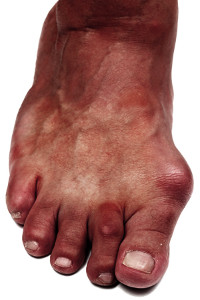A bony protrusion on the side of the big toe is referred to as a bunion. It occurs as a result of a misaligned joint in the big toe and will cause the toe to point out. It typically develops gradually and can be caused by wearing shoes that do not fit properly. These types of shoes include high heels, which may provide inadequate room for the toes to move freely in. Additional reasons why bunions develop include medical conditions such as arthritis, flat feet, or bone deformities. Symptoms of this condition consist of swelling, tenderness, and the affected area may feel stiff. Mild relief may be found while wearing wider shoes, and this may help to reduce friction between the bunion and the shoe. If you have a bunion, please consult with a podiatrist who can properly diagnosis and treat this condition.
If you are suffering from bunion pain, contact Dr. John P. Beaupied of Palos Podiatry. Our doctor can provide the care you need to keep you pain-free and on your feet.
What Is a Bunion?
Bunions are painful bony bumps that usually develop on the inside of the foot at the joint of the big toe. As the deformity increases over time, it may become painful to walk and wear shoes. Women are more likely to exacerbate existing bunions since they often wear tight, narrow shoes that shift their toes together. Bunion pain can be relieved by wearing wider shoes with enough room for the toes.
Causes
- Genetics – some people inherit feet that are more prone to bunion development
- Inflammatory Conditions - rheumatoid arthritis and polio may cause bunion development
Symptoms
- Redness and inflammation
- Pain and tenderness
- Callus or corns on the bump
- Restricted motion in the big toe
In order to diagnose your bunion, your podiatrist may ask about your medical history, symptoms, and general health. Your doctor might also order an x-ray to take a closer look at your feet. Nonsurgical treatment options include orthotics, padding, icing, changes in footwear, and medication. If nonsurgical treatments don’t alleviate your bunion pain, surgery may be necessary.
If you have any questions, please feel free to contact our office located in Palos Heights, IL . We offer the newest diagnostic and treatment technologies for all your foot care needs.




